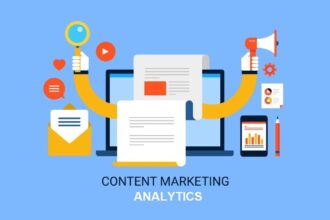A recent article in the New York Times describes a dating site called OkCupid started by four Harvard math graduates and their use of analytics to help people achieve dating success.
Using analytics to match people isn’t a new idea. eHarmony and Match.com have been doing it for years. So what’s new here? Is it an example of Monday Morning Analytics (or should I say Friday Evening Analytics)? Let’s find out.
First, some background. In dating sites, each user creates a profile, typically consisting of a photo and some self-commentary. Users learn about others by looking at their profile photos and reading the associated self descriptions. If a profile is effective, the user may find dating success. If it isn’t, the user may end up watching infomercials (Snuggies, anyone?) on Saturday night. In other words, a profile matters.
OkCupid’s insight? The realization that every user makes a number of implicit decisions when she creates her profile. If we view the profile as the result of a set of decisions made by the user, perhaps we can help the user achieve dating success by optimizing those decisions.
Take the user’s photo for example…
A recent article in the New York Times describes a dating site called OkCupid started by four Harvard math graduates and their use of analytics to help people achieve dating success.
Using analytics to match people isn’t a new idea. eHarmony and Match.com have been doing it for years. So what’s new here? Is it an example of Monday Morning Analytics (or should I say Friday Evening Analytics)? Let’s find out.
First, some background. In dating sites, each user creates a profile, typically consisting of a photo and some self-commentary. Users learn about others by looking at their profile photos and reading the associated self descriptions. If a profile is effective, the user may find dating success. If it isn’t, the user may end up watching infomercials (Snuggies, anyone?) on Saturday night. In other words, a profile matters.
OkCupid’s insight? The realization that every user makes a number of implicit decisions when she creates her profile. If we view the profile as the result of a set of decisions made by the user, perhaps we can help the user achieve dating success by optimizing those decisions.
Take the user’s photo for example. How many decisions do you think are implicitly made in taking a photograph? Here’s OkCupid’s take:
- Facial Attitude. Is the person smiling? Staring straight ahead? Doing that flirty lip-pursing thing?
- Photo Context. Is there alcohol? Is there a pet? Is the photo outdoors? Is it in a bedroom?
- Skin. How much skin is the person showing? How much face? How much breasts? How much ripped abs?
You get the idea.
OkCupid took 7000 photos from its user community and tagged each one with these attributes. The next step was to associate a measure of dating success with each photo. For women’s photos, they went with “new messages received per active month on the site”. For men, it was “women met per attempt” (more details behind these metrics here).
With the data now ready, OkCupid ran what appears to be analyses of the “Excel pivot table” variety (details). While this is not sophisticated, the results seem directly actionable.
If you’re a man, don’t smile in your profile picture, and don’t look into the camera. If you’re a woman, skip photos that focus on your physical assets and pick one that shows you vacationing in Brazil or strumming a guitar.
See what I mean?
I think the idea of viewing the profile as the outcome of a set of decisions and seeking to optimize those decisions is wonderful. However, the recommendations may not be all that effective. And even if they are, they are likely to stop working. Here’s why.
Without more information on how OkCupid handled a number of key issues, I don’t know how much faith to place in the advice. For example, how did they control for the intrinsic facial attractiveness of the person in the photo? Perhaps that’s the true driver of dating success but because it was absent in the data, some of the other variables were spuriously given the “credit”? If this is true, not-very-attractive men can try as hard as they can to look grimly away from the camera, but it isn’t going to help.
Assuming that I am wrong and the recommendations are effective, they seem to contain the seeds of their own destruction. If the majority of OkCupid users starts following the recommendations, the profiles will start looking the same over time and the “stand out” appeal of the optimized profiles will be gone.
Running the analytics again won’t help either – with hardly any variation in the decisions that represent the profiles, the distinction between winning and losing decisions will be miniscule and there won’t be any signal to tease out of the noise.
The bottomline: Neat problem framing. So-so analytics.







